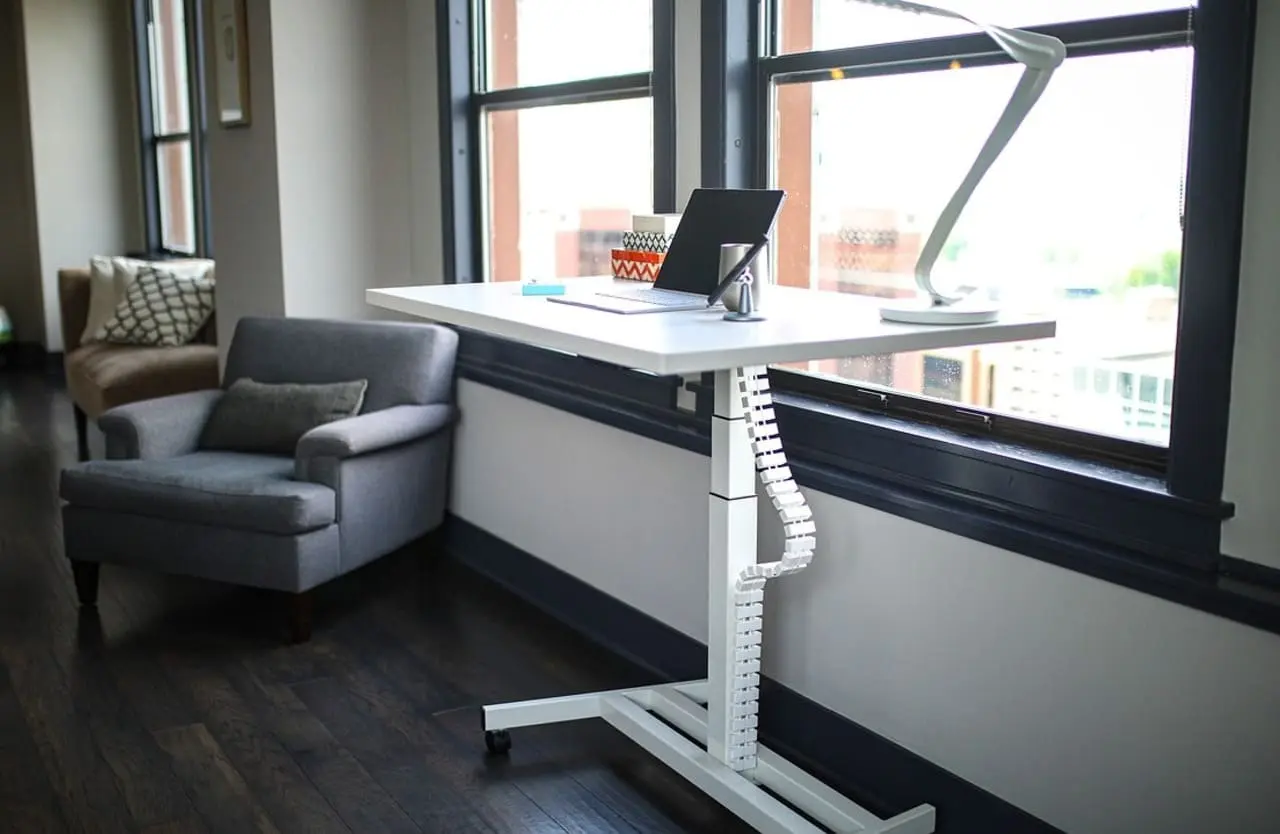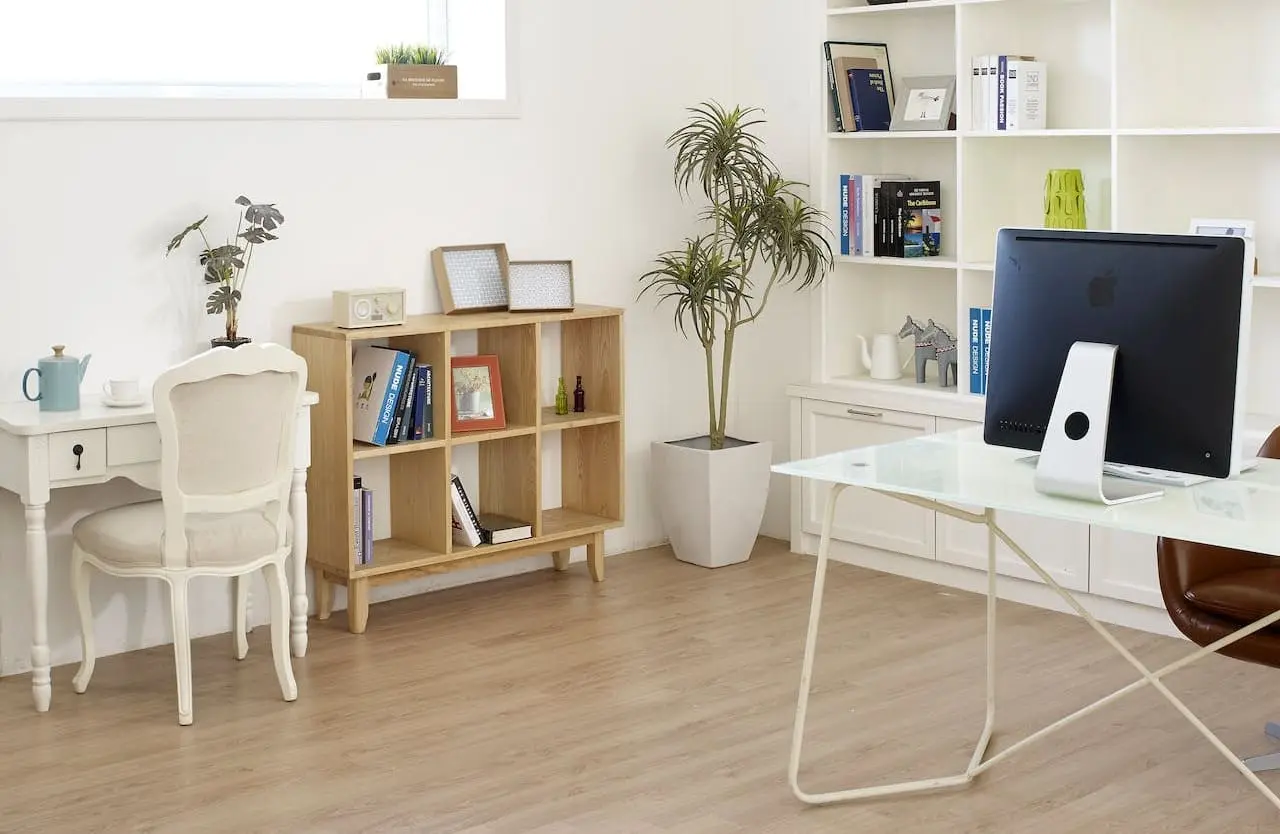In today’s modern world, where the majority of our time is spent sitting at a desk, it’s no wonder that many people are experiencing health issues related to a sedentary lifestyle. One solution that has gained popularity in recent years is the standing desk. Standing desks offer a simple yet effective way to break free from the confines of a chair and reap a multitude of benefits for your overall well-being.
Contents
- Health Benefits of Using a Standing Desk
- Increased Productivity with a Standing Desk
- Standing Desks and Improved Posture
- Standing Desks and Reduced Back Pain
- Standing Desks and Weight Management
- How to Choose the Right Standing Desk for Your Home Office
- Setting Up Your Standing Desk Correctly
- Tips for Transitioning to a Standing Desk
- Conclusion: The Advantages of Incorporating a Standing Desk into Your Home Office Setup
Health Benefits of Using a Standing Desk
Using a standing desk can have a profound impact on your health. One of the key benefits is improved blood circulation. When you stand, your blood flow increases, delivering much-needed oxygen and nutrients to your muscles and organs. This increased circulation can help reduce the risk of cardiovascular diseases and improve overall heart health.
Additionally, standing while working can help combat the negative effects of a sedentary lifestyle, such as weight gain and obesity. Standing burns more calories compared to sitting, aiding in weight management and preventing weight-related health issues. It also helps to regulate blood sugar levels, reducing the risk of developing type 2 diabetes.
Furthermore, standing desks promote better overall posture. Sitting for extended periods often leads to poor posture, which can result in back, neck, and shoulder pain. By standing, you engage your core muscles, promoting better alignment and reducing the strain on your spine. This can alleviate existing back pain and prevent future discomfort.
Increased Productivity with a Standing Desk
Many people find that using a standing desk improves their productivity levels. When you stand, you naturally feel more alert and focused, leading to increased concentration and efficiency. The enhanced blood flow to the brain helps you stay mentally sharp and engaged in your work.
Moreover, standing desks can boost creativity. Standing allows for more freedom of movement, which can encourage brainstorming and problem-solving. With the ability to easily shift positions and stretch your legs, you are less likely to feel stagnant or confined, thus promoting a more dynamic and creative mindset.
Studies have shown that using a standing desk can also lead to better decision-making. The increased blood flow and improved cognitive function that standing provides can enhance your ability to think critically and make sound judgments. This can be especially beneficial for individuals in roles that require quick thinking and problem-solving skills.
Standing Desks and Improved Posture
One of the most significant advantages of using a standing desk is the positive impact it has on your posture. Sitting for long periods can cause muscle imbalances and weaken your core, leading to slouching and poor posture. By standing, you engage your core muscles, helping to strengthen them and maintain proper alignment.
Using a standing desk encourages you to maintain an upright position, with your shoulders back and your spine aligned. This helps to relieve strain on your back, neck, and shoulders, reducing the risk of developing musculoskeletal issues, such as chronic pain or herniated discs.
To maximize the benefits of a standing desk for your posture, it’s essential to ensure that your desk is set up correctly. The height of your desk should allow your elbows to be at a 90-degree angle when your arms are resting on the surface. This positioning promotes proper alignment of your wrists, reducing the risk of developing repetitive strain injuries, such as carpal tunnel syndrome.
Standing Desks and Reduced Back Pain
Back pain is a common ailment experienced by many individuals, particularly those who work in sedentary jobs. Sitting for extended periods can place excessive strain on the lower back, leading to discomfort and pain.
Using a standing desk can help alleviate back pain by promoting better spine alignment and reducing the pressure on your lower back. When you stand, your core muscles engage to support your body, thus relieving the strain on your back muscles.
Furthermore, standing encourages more frequent movement and stretching, which helps to prevent stiffness and tightness in your muscles. By incorporating gentle exercises and stretches into your standing routine, you can further alleviate back pain and promote flexibility.
Standing Desks and Weight Management
Weight management is a concern for many individuals, and using a standing desk can be a simple yet effective way to burn more calories throughout the day. Standing burns more calories compared to sitting, as it requires more effort from your muscles to maintain an upright position.
By incorporating standing into your work routine, you can increase your daily energy expenditure, contributing to weight loss or weight maintenance. Additionally, standing desks promote better blood sugar control, reducing the risk of developing insulin resistance and metabolic disorders.
To maximize the weight management benefits of a standing desk, it’s important to incorporate movement into your workday. Take short breaks to walk around, stretch, or perform light exercises. These small bursts of activity can help boost your metabolism and prevent the negative health effects associated with prolonged sitting.
How to Choose the Right Standing Desk for Your Home Office
When selecting a standing desk for your home office, there are several factors to consider. First, determine whether you prefer a fixed-height desk or an adjustable one. Adjustable desks offer the flexibility to switch between sitting and standing, allowing you to find the optimal position for your comfort and productivity.
Next, consider the size and layout of your workspace. Ensure that the desk you choose fits well within your designated area and provides enough surface space for your work essentials. It’s also important to assess the stability and durability of the desk, as it should be able to support your equipment and remain steady during use.
Another crucial factor to consider is the ease of adjusting the desk height. Look for desks with smooth and effortless height adjustment mechanisms, allowing you to switch positions seamlessly. Additionally, pay attention to the ergonomics of the desk, ensuring that it promotes a comfortable and neutral posture.
Setting Up Your Standing Desk Correctly
To fully reap the benefits of a standing desk, it’s essential to set it up correctly. Start by adjusting the height of your desk to ensure that your elbows are at a 90-degree angle when your arms are resting on the surface. This positioning promotes proper alignment of your wrists, reducing the risk of developing repetitive strain injuries.
Next, position your computer monitor at eye level to prevent neck strain. Use a monitor stand or an adjustable arm to achieve the desired height. Additionally, place your keyboard and mouse in a way that allows your wrists to remain neutral, reducing the risk of developing wrist pain or carpal tunnel syndrome.
Consider incorporating an anti-fatigue mat into your standing setup. These mats provide cushioning and support for your feet, reducing discomfort and fatigue during prolonged standing. They also encourage subtle movement, such as shifting your weight or stretching your legs, which can further enhance the benefits of standing.
Tips for Transitioning to a Standing Desk
Transitioning to a standing desk can take some time and adjustment. Here are a few tips to help make the transition smoother:
- Start gradually: Begin by standing for short periods and gradually increase the duration over time. This allows your body to adapt to the new posture and prevent excessive fatigue.
- Wear comfortable footwear: Invest in supportive and comfortable shoes or use gel inserts to provide cushioning and reduce foot and leg fatigue.
- Take regular breaks: Remember to incorporate regular breaks into your standing routine. Use these breaks to stretch, walk around, or perform light exercises to prevent muscle stiffness and fatigue.
- Incorporate movement: Make an effort to incorporate movement into your workday. Take phone calls while walking, perform standing exercises, or use a balance board to engage your muscles and prevent prolonged static standing.
Conclusion: The Advantages of Incorporating a Standing Desk into Your Home Office Setup
Incorporating a standing desk into your home office setup can bring numerous benefits to your health, productivity, and overall well-being. From improved posture and reduced back pain to increased calorie burn and better blood circulation, standing desks offer a simple yet effective solution to combat the negative effects of a sedentary lifestyle.
When choosing a standing desk, consider factors such as adjustability, stability, and ergonomics to find the right fit for your needs. Ensure that your desk is set up correctly, with proper alignment of your wrists and monitor, to maximize the benefits and prevent potential injuries.
Transitioning to a standing desk may take time and adjustment, but with patience and the implementation of movement breaks, you can easily adapt to this new work style. Embrace the advantages of a standing desk and experience the positive impact it can have on your health and productivity in your home office.


